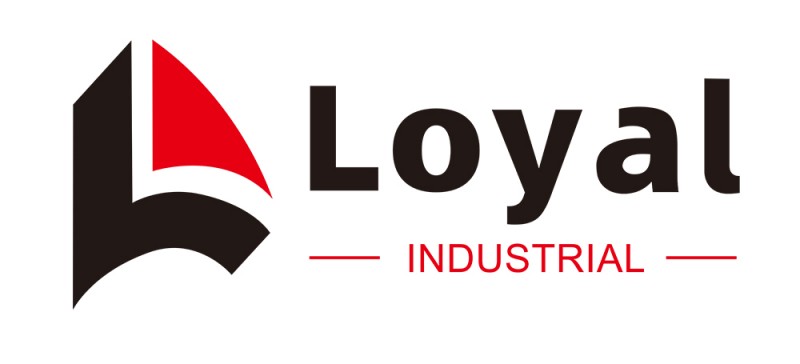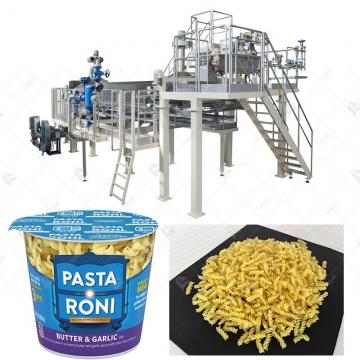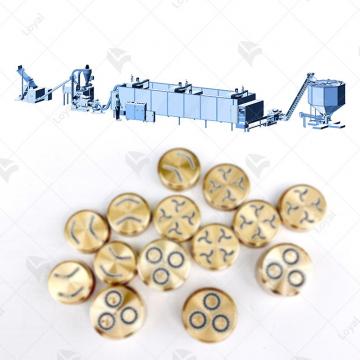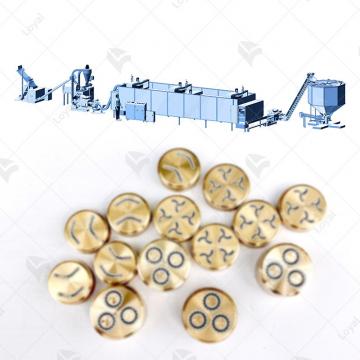Redefining Processes: Full Automation in Lines Resembling Spaghetti Noodles
Redefining Processes: Full Automation in Lines Resembling Spaghetti Noodles
Introduction
Shandong Loyal Industrial Co., Ltd. has incorporated advanced technologies from HEMAKS and Capitanio in the production of its macaroni.In the fast-evolving landscape of modern industries, the integration of automation into processes has become a hallmark of efficiency and progress. Full automation, a concept reshaping traditional workflows, holds a pivotal role in this transformative era. This article explores the profound impact of full automation on various industries, drawing a metaphorical connection to "lines resembling spaghetti noodles."
Understanding Full Automation
Full automation, encompassing a spectrum of technological advancements, refers to the complete mechanization of processes. The roots of automation trace back to the industrial revolution, where manual tasks began transitioning into machine-driven operations. Today, with the advent of cutting-edge technologies, the scope of full automation has expanded exponentially, reshaping how we perceive and execute tasks.

Lines Like Spaghetti Noodles: A Metaphor Unveiled
The metaphorical reference to "lines like spaghetti noodles" offers a vivid depiction of the intricate and interconnected nature of automated processes. Just as the strands of spaghetti weave and entwine, automated systems create a complex web of operations that extends across various facets of an organization. This interconnectedness mirrors the dynamic relationships between different components within automated workflows.
The metaphor goes beyond mere complexity; it highlights the adaptability inherent in processes resembling lines like spaghetti noodles. Much like how these lines can be molded and shaped to fit different containers, automated systems exhibit a remarkable flexibility to adapt to changing requirements and dynamic environments. This metaphor underscores the intricate dance of efficiency and adaptability required in managing fully automated processes.

Benefits of Full Automation
Bold lines like spaghetti noodles are symbolic of the increased efficiency and productivity that full automation brings to industries. The streamlined nature of automated processes, akin to the organized arrangement of spaghetti strands, leads to significant cost savings through reduced operational redundancies. The optimal utilization of resources becomes a natural outcome, as automated systems allocate tasks with precision, eliminating inefficiencies.
Moreover, the precision offered by automation reduces errors to a minimum, enhancing overall operational accuracy. In the world of lines resembling lines like spaghetti noodles, each strand signifies a well-coordinated operation, contributing to the larger tapestry of a highly efficient and error-free system. As industries embrace full automation, the benefits depicted by this metaphor become tangible markers of progress, reshaping the way we approach and execute complex tasks.
Challenges and Considerations
While the benefits of full automation are substantial, challenges arise. Like the potential entanglement of spaghetti noodles, there are drawbacks to consider. The intricate nature of automated processes can lead to complexities that are reminiscent of untangling a web of spaghetti strands.
Striking a delicate balance between human intervention and machine control becomes crucial to ensure the seamless functioning of these automated systems. Ethical dilemmas surrounding job displacement and societal concerns regarding the overreliance on technology also come to the forefront. Navigating these challenges is not only a technological necessity but also a moral imperative for the responsible implementation of full automation.
Real-world Applications
Various industries, from manufacturing to healthcare, are embracing full automation with unprecedented enthusiasm. In manufacturing, robotic assembly lines exemplify the efficiency gained through automation, resembling the organized and structured arrangement of spaghetti strands. In healthcare, automated diagnostics and robotic surgeries showcase the positive impact on efficiency and output, improving patient outcomes.
Case studies from these industries and others provide tangible evidence of the transformative power of full automation. These real-world applications not only highlight success stories but also offer valuable lessons and best practices for others venturing into the realm of fully automated systems. As industries continue to adopt and adapt, the collective knowledge gained from these applications serves as a guiding light for the ongoing evolution of automated processes.

Future Outlook
The future outlook for full automation is a canvas painted with the strokes of emerging technologies. Artificial intelligence, the cornerstone of this evolution, continues to advance at an unprecedented pace. Its role in redefining automated processes extends beyond routine tasks, as AI becomes more adept at complex decision-making and problem-solving. Predictions foresee a dynamic evolution where technology, particularly AI, serves as the driving force behind a new era of efficiency and innovation.
As we gaze into the future, the integration of AI into automated systems promises not only streamlined processes but also opens doors to uncharted territories of possibilities. The synergy between human intellect and artificial intelligence is poised to create a harmonious blend, reshaping the landscape of automation and paving the way for a future where lines like spaghetti noodles symbolize not chaos but rather the intricacies of a finely tuned and highly efficient system.
Conclusion
In conclusion, the impact of full automation on industries is akin to the transformative nature of lines resembling lines like spaghetti noodles. The intricate web of automated processes revolutionizes efficiency, productivity, and accuracy. As we journey towards streamlined processes, the integration of automation stands as a testament to human ingenuity and technological progress. Embracing this evolution, we move forward into a future where automation redefines the very fabric of our operational landscapes.





